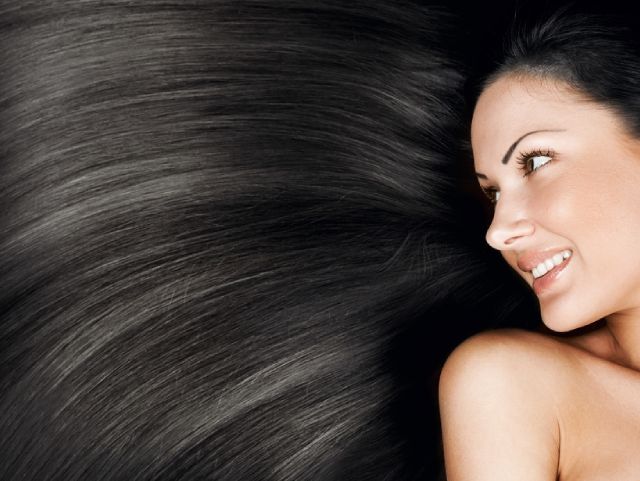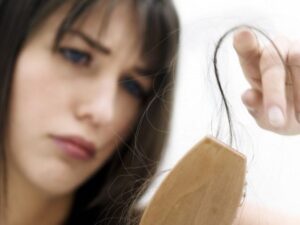Have you been seriously tempted to straighten or perm your hair but are terrified of the damage it could do? Do you wish to get chemical hair treatments done in a safe and healthy manner? Read on and learn how
When it comes to hair, I have come to realize that most of us are unhappy with what we have. Losing up to 100 strands a day is perfectly normal. But even after repeated counselling, patients still panic if they find any more than 20 or 30 odd strands of hair falling out. Those with thick hair want “silky” hair. Those with straight hair love curls. Those with dark hair want lighter hair. Apparently, life is too short for boring hair! And hair related queries, phobias and myths are the most frequently asked questions I face.
You need to understand the chemistry and science of chemical hair treatments, before you can have an educated discussion with your hairdresser and make an informed choice.
For instance, did you know that most hair straightening products contain a chemical called ‘Formaldehyde”? Even some of the ones labelled “Formaldehyde Free”! Formaldehyde is a sour smelling chemical that can irritate the eyes and nose, leading to eye watering, breathlessness, itching and rashes when inhaled. What’s even more frightening is that formaldehyde is a carcinogen (cancer-inducing chemical). Formaldehyde based hair straightening formulas are banned in Canada and the European Union. However they are still being used in USA, though they carry warning labels. So if you want to straighten your hair in a safe and chemical free manner, use a hair iron instead. Chose a ceramic, titanium or tourmaline plate. Use small width plates for short and slightly wavy hair. And use wider plates if your hair is long and thick.
However, if you still choose to get a permanent chemical hair straightening done, then you must understand the different technologies available. There is the Japanese Yuko thermal rebonding treatment. And then there is the milder Brazilian blow out and keratin hairstraightening treatments.
All chemical treatments that are done to achieve straightening and perming work by breaking and realigning the natural chemical bonds in our hair. Flat irons manipulate the hydrogen bonds of our hair by steaming and driving out the natural water content in our hair. They are a lot safer, as long as you know how to use them correctly and do not overheat your hair. On the other hand, chemical treatments manipulate the sulphur bonds of our hair by breaking them, and are then realigned by repeated flat ironing (for straight hair) or tight curling (for a perm).
Mild chemical treatments used ammonium sulfates and the results only last 12-15 washes.
Medium strength treatments use ammonium thioglycolates which have a pH of 8-11 (the natural pH of our hair lies between 4.5 to 5.5). Most straightening and perming treatments use thiols.
High strength chemical hair relaxers use sodium hydroxide relaxers which have a pH of 11-14. These do the most damage to your hair. But these are used if someone with really straight hair wants tight spiral curls. Or if someone with extremely thick and kinky Negroid hair is looking for pin straight Japanese hair. But your stylist will only recommend these treatments if your hair is strong, thick and healthy enough to sustain this intense chemical assault. You must be mentally prepared to lose some hair after the treatment. You must also be willing to make a PERMANENT change in your hair texture; which requires commitment, high maintenance care and regular touch ups.
The Japanese thermal straightening takes about 4-5 hours to complete. It is an expensive treatment but the results are permanent. You will not be able to wash your hair, tie it or tuck it behind your ear for the next 3 days. Try to limit the treatment to just once in 8-10 months to avoid excessive damage. If you like to dye your hair darker, you will have to do it a month AFTER your treatment. So if you have dyed yourhair recently, wait for 3 or 4 months before getting the Japanese treatment. If you want to bleach your hair lighter, then that’s double the damage you will do to your hair, so think thrice!
The Brazilian blowout and Keratin treatments are milder. They temporarily straighten the hair by sealing a liquid keratin and preservative solution into the hair using a hair iron. These also contain formaldehyde. It does leave the hair smooth and glossy but the results may not be as dramatic for someone with really curly hair. It is cheaper but the results only last 2-4 months. This is a good option for someone who would like to go back to their natural hair at some point. Or for someone who would like to use rollers or curling irons to vary their look from time to time.
What about perming? Perm treatments also use thiols. If you want a perm AND want to colour your hair, your stylist will chose a chemical with pH 8-11 which is nice for softer piggyback curls. But for tight spiral curls, you may need pH 11-15 hydroxide solution, which is not compatible with permanent hair dyes, though you can still use temporary hair colours.
DO NOT try to get a perm done at home. Go to an experienced stylist. Perming is a long and uncomfortable process. The chemical smells like rotten eggs and your neck might ache. Use cotton to protect your ears and hairline so your skin won’t get a chemical burn. Keep your eyes shut during the process. Take a reference picture to your stylist so she can understand if you are looking for 50s style pin curls, or soft beach waves, or a piggy back perm (also known as body wave, which adds volume to limp hair), or the really dramatic spiral perm. Check out Google Images for pictures and ideas. You can also upload a picture of yourself on www.instyle.com/makeover, where you can try different hairstyles on yourself before you make up your mind.
Your perm may look very tight at the end of the treatment and you must wait for 48-72 hours before you can wash your hair. So expect your family to complain about the rotten egg smell from your hair for the next 3 days! After the first wash, your curls will loosen up and you will finally get the full beauty effect. Do not blow-dry permed hair. When the roots grow out, you cannot make do with a touch up. The whole process needs to be repeated. So try to limit yourself to one perm a year. Do not colour your hair for a month before or after your perm to avoid a double chemical assault.
After a perm or rebonding treatment, it is essential to take very good care of your hair. CONDITION, CONDITION, CONDITION! Use hair oils, use the correct shampoo and hair conditioning masks, and go for a deep conditioning hair spa treatment every fortnight. All of this needs time and money. This also means that your life will revolve around your hair and its maintenance (if it does not already!). If you cannot make this commitment, or if you suffer from hair fall, dry, damaged or thinning hair, DO NOT GET ANY CHEMICAL HAIR TREATMENTS DONE.
Tight African braids (also known as corn rows) and hair weaves look very attractive. But these need to be left unwashed for several days, which can be a hygiene horror. They lead to a kind of balding called ‘traction alopecia’. The strain on the connective tissue of the scalp can even leave you with headaches and scalp swelling. The good news however is that traction alopecia is reversible. Just undo the braids and weaves, let your hair grow out in its natural state, oil and condition it regularly, and avoid tight hair dos and braids.


